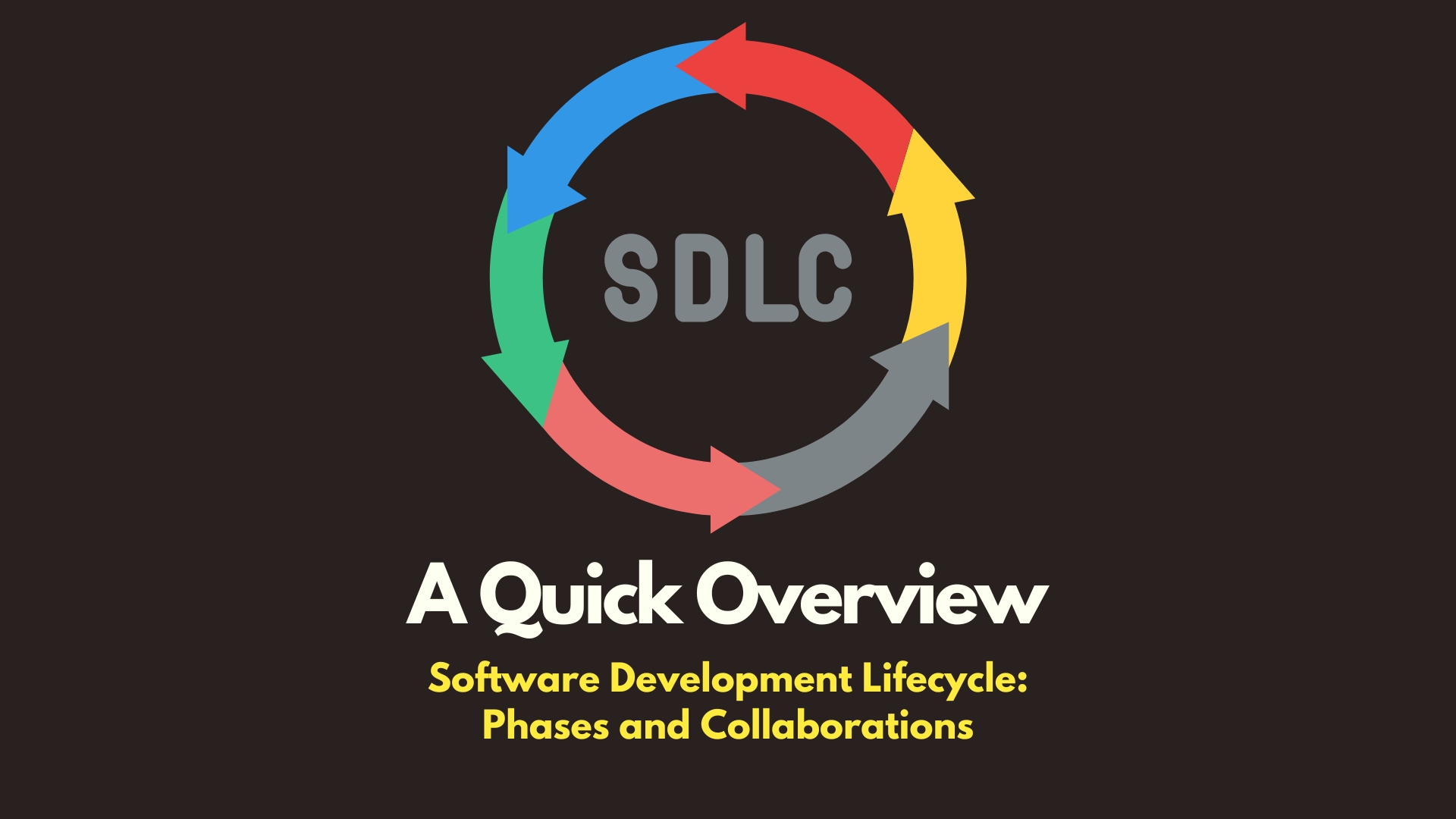Published
- 4 min read
Navigating Software Development Life Cycle: Roles and Collaborations

Introduction
In the ever-evolving world of software development, understanding the distinct roles within the software development lifecycle (SDLC) is crucial for both newcomers and seasoned professionals.
With job descriptions often casting a wide net of requirements, it’s easy to feel overwhelmed by the breadth of skills and responsibilities demanded. This overview aims to demystify the various roles involved in the SDLC, highlighting their primary functions and how they work together to bring software projects to life.
1. Requirements and Planning Phase
This phase involves understanding what needs to be built and planning how to achieve it. Key roles often collaborate to gather requirements, set project goals, and outline the scope of work.
Roles Involved:
- Business Analyst: Gathers and documents requirements from stakeholders.
- Systems Analyst: Translates business requirements into technical specifications.
- Product Manager / Product Owner: Defines the product vision and prioritizes features.
- Project Manager: Plans the project scope, timeline, and resource allocation.
- Technical Writer: Begins documentation of requirements and initial project details.
Collaboration Details:
- Business Analyst and Systems Analyst work together to ensure that business needs are accurately translated into technical requirements.
- Product Manager / Product Owner collaborates with both analysts to ensure the product aligns with business objectives.
- Project Manager coordinates with all roles to develop a feasible project plan.
- Technical Writer starts documenting the requirements and any early project specifications.
2. Design Phase
This phase focuses on creating the blueprint for the software. It involves defining the architecture, user experience, and technical design.
Roles Involved:
- Software Architect: Defines the system architecture and technical stack.
- UI/UX Designer: Designs the user interface and user experience.
- Systems Analyst: Provides detailed system specifications.
- Product Manager / Product Owner: Ensures the design aligns with the product vision.
- Technical Writer: Documents design specifications.
Collaboration Details:
- Software Architect works with UI/UX Designer to ensure the design is feasible and aligns with technical constraints.
- Systems Analyst ensures that the design meets all requirements and can be implemented effectively.
- Product Manager / Product Owner provides feedback to ensure the design aligns with the overall product vision.
- Technical Writer documents the technical design and any decisions made.
3. Development Phase
This phase involves coding and building the software according to the design specifications. It’s where most of the technical implementation occurs.
Roles Involved:
- Software Engineer / Developer: Writes and maintains the code.
- Database Administrator (DBA): Manages the database and data structures.
- DevOps Engineer: Sets up development environments and integrates CI/CD pipelines.
- Software Architect: Provides guidance on architectural implementation.
- Technical Writer: Continues to document the development process and code-related information.
Collaboration Details:
- Software Engineers / Developers and Database Administrator (DBA) work together to ensure the application integrates well with the database.
- DevOps Engineer supports developers by automating deployments and ensuring the development environment is robust.
- Software Architect provides oversight to ensure the development aligns with the architectural design.
- Technical Writer captures detailed documentation of the codebase and development processes.
4. Testing Phase
In this phase, the software is tested for quality, functionality, and performance to identify and fix bugs.
Roles Involved:
- Quality Assurance (QA) Engineer: Conducts testing to identify issues.
- Software Engineer / Developer: Fixes bugs and issues identified during testing.
- UI/UX Designer: Validates the user experience.
- DevOps Engineer: Ensures testing environments are properly configured.
- Technical Writer: Updates documentation based on testing results.
Collaboration Details:
- QA Engineers work closely with Software Engineers / Developers to ensure bugs are identified and resolved.
- UI/UX Designers test the usability and report any interface issues to developers.
- DevOps Engineer ensures that test environments mirror production as closely as possible.
- Technical Writer documents any changes made as a result of testing.
5. Deployment Phase
This phase involves deploying the software to a production environment and ensuring it runs smoothly.
Roles Involved:
- DevOps Engineer: Manages deployment processes and environments.
- Software Engineer / Developer: Assists with deployment and resolves any issues.
- Database Administrator (DBA): Ensures database integrity during deployment.
- Project Manager: Coordinates deployment activities.
- Technical Writer: Finalizes deployment documentation.
Collaboration Details:
- DevOps Engineer works with Software Engineers / Developers to deploy the application.
- Database Administrator (DBA) ensures database changes are correctly applied.
- Project Manager coordinates the deployment schedule and communication.
- Technical Writer ensures all deployment steps are documented for future reference.
6. Maintenance Phase
This phase involves ongoing support, updates, and enhancements to the software after deployment.
Roles Involved:
- DevOps Engineer: Monitors system performance and manages updates.
- Software Engineer / Developer: Implements updates and fixes issues.
- Database Administrator (DBA): Manages database updates and performance tuning.
- Technical Writer: Updates documentation to reflect any changes or enhancements.
- Security Engineer: Monitors and addresses security vulnerabilities.
Collaboration Details:
- DevOps Engineers and Software Engineers / Developers work together to ensure smooth updates and performance monitoring.
- Database Administrator (DBA) maintains database performance and applies updates.
- Technical Writer keeps documentation current with the latest software changes.
- Security Engineer collaborates with all roles to ensure security best practices are followed.
A Quick Recap
| Collaborative Group | Key Roles |
|---|---|
| Requirements and Planning | Business Analyst, Systems Analyst, Product Manager/Owner, Project Manager, Technical Writer |
| Design | Software Architect, UI/UX Designer, Systems Analyst, Product Manager/Owner, Technical Writer |
| Development | Software Engineer/Developer, Database Administrator (DBA), DevOps Engineer, Software Architect, Technical Writer |
| Testing | QA Engineer, Software Engineer/Developer, UI/UX Designer, DevOps Engineer, Technical Writer |
| Deployment | DevOps Engineer, Software Engineer/Developer, Database Administrator (DBA), Project Manager, Technical Writer |
| Maintenance | DevOps Engineer, Software Engineer/Developer, Database Administrator (DBA), Technical Writer, Security Engineer |